Archive for the ‘Children’s Book Reviews’ Category
Hot Off The Press From Tara
Author: utbt15 Feb 2012
 |
Title: Excuses, Excuses! Author: Anushka Ravishankar Illustration: Gabrielle Manglou Age: 4 – 6 |
Have you ever been in a predicament where you ask your child to get ready for school, 15 minutes have gone by and you find that she is still in her jammies watching water fall from the faucet, testing gravity? In more than one instance, I bet!
Every time there is a reason why the job is not done and the way the reason is explained and how the child jumps from one point to another, suddenly remembering something that happened many weeks back……. all this is humorous when it is not your child and you are not the parent in the hot seat. That is why it is so interesting to “Meet Neel, who has the most noble intentions, all of which have a funny habit of going wrong”.
Neel starts the week with a plan. Monday through Sunday he has jobs for every day. He is willing to take up more responsibilities, but is horrified that he has run out of days! As he goes through each day, Neel comes up with excuses why the job is not done. There is an elephant with spanking white socks stuffed in its ear, a very (Alice in) wonderland kind of clock, hypnotizing dogs and many more in the mix.
If you think my narration makes Neel’s story interesting, you must read how Anushka Ravishankar has presented it in verse. Funny and a true account from a child’s POV!
Gabrielle Manglou’s collage style of illustrations complements Neel’s whacky stories well. The illustrations will appeal to children because of its openness.
 |
Title: The Great Race Author: Nathan Kumar Scott Illustration: Jagdish Chitara Age: 4 – 6 |
This book the third of Nathan Kumar Scott’s Kanchil stories. In this story Kanchil loses a running race to Plean. Pelan the snail, of all animals! Pelan definitely had a plan up his sleeve when he openly challenges Kanchil. You have to read and find out how this Indonesian trickster tale unfolds.
Jagdish Chaitara’s folk paintings are vibrant and enticed me. Take a peek behind the scenes to get an idea of what goes on while illustrations get picked for a book.
I can imagine myself framing this piece or working with children on similar lines.
Disclaimer: PDFs of the books were emailed to me as complimentary review copies. The review represents my true opinion and is not influenced by the ‘complementary’ factor. As an avid reader and a passionate book lover, I feel that every book I recommend needs to be of certain quality and I genuinely feel that the books reviewed above are a good read.
Anna Nootrandu Noolagam
Author: utbt19 Jan 2012
That is Anna Centenary Library for the non-Tamil.
(Pic source: Wikipedia)
I wasn’t going to leave Chennai without visiting this library. So on a rainy day, I booked a cab and landed in Koturpuram with the children in tow. Totally sigh worthy place. Beautifully conceptualized and constructed and can give any US library a tough competition. Note ‘CAN’ is the keyword here.
Management and administration needs a lot of fine tuning. As a visitor one gets contradicting information regarding what to carry inside, what to leave in the car. We were asked to leave our purses and carry just our cellphones in to the building, very surprising considering that majority of the population arrives in bus or by walk! After we crossed the lobby we found ourselves in front of the coffee shop without our purse. When asked the security told me, ‘Madam you must have put some rupee notes in your pant pocket’. For which my response was, ‘What if I am not wearing pants or pants without pockets?’ and I instantly regretted it! Thankfully the lady replied, ‘Most of them who come here wear pants’ instead of, ‘Inside your bra, like women did in good old days’.
The children’s section was the only section I visited. If I had more time I would have checked out the manuscripts section also. The library is not yet set up for checking out books. They have OPAC set up only through intranet, which means the catalog can only be accessed from the within the library.
I searched the catalog through the computer and was delighted to find many of my favorites showing up. The initial purchase was 70,000 books, I was told. No one knew if they will be buying more books and who is in charge of it. But the classification and arrangement was very confusing for me. They follow Dewey Decimal Classification for shelving, but when it comes to the end user, DDC must be transparent, IMO. Also the number of staff are simply not enough to check inventory and shelve the books for the number of visitors. End result chaos, fiction picture books and non-fiction chapter books shelved next to each other, tables heaped with books, one whole section of the library piled with books pulled out by children and cordoned off to be shelved later(which was after the winter break and school reopen I was told by the staff!).
Hopefully we don’t grow complacent that we have South India’s largest library and neglect the upkeep, if the library stays as a library, that is!
Answer This For Me Will You?
Author: utbt24 Nov 2011
The Firework-Maker’s Daughter is the first Pullman book we read at home. As endearing as we found this book to be, I am fully aware that Pullman’s writing can be dark. So I always check out the reviews. While doing so, I stumbled across Publisher’s Weekly’s editorial review of Pullman’s The White Mercedes at Amazon.
Cut+Paste of the review here
“The menacing darkness that lurked at the edges of Pullman’s trilogy of Victorian-era thrillers ( The Ruby in the Smoke et al.) comes to the fore in this contemporary tale of shattered innocence and betrayed love set in Oxford, England. From the first line–“Chris Marshall met the girl he was going to kill on a warm night in early June”–the sense of imminent evil and inexorable doom builds unrelentingly to the novel’s violent, gutwrenching climax. Naive and well-intentioned, 17-year-old Chris has love, not murder, on his mind when he meets and later beds Jenny (described in lyric and intimate detail), who has run away from her abusive father. Indeed, it is precisely Chris’s trusting nature and sense of justice that cause the youth to be duped by a vengeful felon into causing Jenny’s death–and only then because she is mistaken for someone else. Here is a modern-day Shakespearean tragedy, with star-crossed lovers separated by fate, a terrifyingly philosophical villain and assorted innocents, cads and buffoons. Its evocative narrative and throat-tightening suspense make this novel a compelling read; however, the graphic sex, moral ambiguity and somber ending make it most suitable for mature YA readers. Ages 12-up. ”
I was doing perfectly fine, mentally valuating the appropriateness of this book(NOT for Chula, for some other purpose). But the last two lines left me gaping. Since when does graphic sex and 12 year old go together?
Which brings me to the questions,
Do you agree or disagree with me?
Do you think I am over reacting. A 12 year old can handle this content?
What were you reading when you were 12?
Would you let your 12 year old read this?
Thanks and have a good one folks.
My Bit For CROCUS2011
Author: utbt31 Oct 2011
We are winding up CROCUS2011. Its been loads of fun with the five elements theme suggested by Praba.
I wanted to do something diverse this time. So I picked:
AN INTERVIEW WITH Mrs.NIRMALA DIAZ, FOUNDER OF SLOKA WALDORF SCHOOL – Waldorf schools place a high emphasis on nature. This is tricky considering that young children have a egocentric way of thinking and are not ready to view themselves as a small part in the bigger scheme of things. Mrs.Diaz explains beautifully how nature appreciation paves way to a balanced way to nurture and educate young children. An inspirational interview.
MA GANGA AND THE RAZAI BOX – a children’s book that touches on the topics of desertification and soil erosion through mythology. I found the story telling quite innovative.
THE LAST CHILD IN THE WOODS – If you are a teacher, you NEED to read this book. It changes the way you will plan/implement your curriculum. Do I have to tell more?
THE NATURE TEACHER – Doing lesson plans is pure joy. At SaffronTree, we were discussing that we have covered many nature themed books even before we hit upon the FIVE ELEMENTS theme for CROCUS2011 and if there was a way to incorporate all these past posts in to CROCUS2011 without overwhelming the readers it would be swell. This along with Richard Louv’s ‘nature as a teacher for young children’ made this post shape up the way it is right now. Pure joy people! In the near future, I would love to do workshops and share this joy with other people in the teaching community. Wish me the best.
Now go read all the posts @ SaffronTree if you haven’t already.
Following My Paint Brush
Author: utbt9 Sep 2011
Indian society has many strata based on caste and/or class. What once could have been a loose way to organize people and make laws has now transmogrified in to commandments, propelled purely by the willingness of the people to accept and conform. Being a woman AND being born in the lower caste AND being poor can be a triple whammy. Rarely there are some people who break out of this cycle and it is an uphill task to do so.
FOLLOWING MY PAINT BRUSH tells the real life story of the Mithila painting artist Dulari Devi who bettered her life by following her passion – painting. Her story is told through her own paintings and the simple, yet powerful words of Gita Wolf.
Gita subtly tells how Dulari Devi overcame her creator’s block and draws inspiration from her life. This particular picture, displaying elements of symmetry and repetitive geometrical patterns shows one half of the painting with minimal colors and intricate lines. Where as the other side shows vibrant colors filled in between lines. This is the fusion of two styles of Mithila art – the Kachni and the Bharni.
The line that spoke the most to me is:
“As time went on I couldn’t imagine a single day without painting. It was a part of my life.”
It made me think, when you are born in and living in poverty, the lack of power to do or say anything, the feeling of helplessness associated with the situation, has a greater impact on human emotions than lack of money and the material comforts it can buy. Once Dulari Devi started painting, once she started expressing herself and her paintings get some kind of recognition, she just cannot stop.
This comes through in the last page when Dulari Devi says, “I was so proud that people wanted to know about me and what I thought.”
From promoting the Mithila art to celebrating the will of this talented artist, this book is quintessential Tara. FOLLOWING MY PAINT BRUSH found its way to my coffee table and the message to my heart.
Pic courtesy: https://www.tarabooks.com/
Special thanks to Tara Books for a free copy of FOLLOWING MY PAINT BRUSH
BOOK REVIEW: The Mystery Of Blue
Author: utbt5 Jul 2011
The Mystery Of Blue, By Muriel Kakani, Art By Boski Jain, Publishers: Tulika Books, Ages: 6 – 9, Picture courtesy: tulikabooks.com. Review written for Saffron Tree.
Have you read Sivakamiyin Sabatham by Kalki? If not and if you can read Tamil, you can read the whole novel here. Sivakamiyin Sabatham is a historical fiction by Kalki, written in 1944, for over a period of 12 years, in four parts and 209 chapters. It truly is a master piece and one of the main reasons I want my kids to learn how to read Tamil, is for them to read Kalki’s work in its original form. No, this is not a review of Sivakamiyin Sabatham. But there is a point behind this digression.
The one line story is, ‘The Pallava prince avenges the Chalukya king who kidnapped his love, the dancer Sivakami.’ How did the Chalukya king manage to kidnap Sivakami, the Pallava prince’s lover, in the middle of a siege with the whole Pallava army watching? The answer to this is, Sivakami’s father – a gifted sculptor sneaks out of the Kanchi fort, with his daughter and willingly takes refuge with the Chalukya king because he is tricked in to believing that the Chalukya kings knows the secret of the permanent natural dyes used to create the Ajantha paintings! So great is the imaginary character’s desire to find out how the natural dyes were created in the 2nd century BC, that he walked out on his benefactor, in to enemy camp and thus offsetting a series of events in Kalki’s imagination!
The novel leaves the reader wondering, how did so many colors exist in India? How were they created? How were the primary colors extracted? Were the vegetable dyes treated specially for them to last through the centuries? If the dye pigments were extracted from the flora unique to a specific region, how were the same primary colors extracted through out the country? Was the knowledge about the dyes and the extraction process freely shared or was it kept under lock and key?
These are the questions explored in Muriel Kakani’s, The Mystery Of Blue. The story is narrated by little Kunku from the village of Ilkal. Kunku’s father and mother are dyers and weavers like the thousand other people in their village. As Kunku describes how her mother makes different colors from one pigment, one cannot help but wonder the scientific process behind dye making! Also one is filled with awe how the people in old times lived with a deep understanding of nature and the numerous experiments they had to go through to isolate the pigments. Kunku’s world is filled with orange, red, maroon, purple and pink. One day, Kunku, inspired by the blue shade on her pet pigeon Chandrakali’s neck embarks on the journey of making blue. See how nicely the author touches on the possibility that the artisans were influenced by the colors they see in nature?! How Kunku and Chandrakali manage to make blue is the rest of the story.
The illustrations are rich and captures the essence of the story. As the story proceeds the warm earthen tones give way to the cool blue, stately indigo, royal purple and soothes the eye. The block print patterns are gorgeous.
We have owned this book for two weeks, but I have read it as a bed time story many many times. The children are enjoying the beautiful illustrations and are learning how the ancient Indians worked scientifically and in unison with nature. I am not complaining.
Jan 27 – Holocaust Remembrance Day
Author: utbt26 Jan 2011
United States Holocaust Memorial Museum (USHMM) has detailed lesson plans for educators about Holocaust and the reason why children must learn about it. But for me this quote below is reason enough.
“There is only one thing worse than Auschwitz itself….
….and that is if the world forgets there WAS such a place.”
-Henry Appel, Survivor
I strongly believe that young children must not be exposed to meaning less violence like in movies, video games and graphic print media, so why introduce Holocaust to my four year old and six year old?
Well…. media violence is perceived as entertainment. It encourages the child to take a passive role and makes the child indifferent to what is going on. By introducing Holocaust to my children, I am trying to achieve the exact opposite effect – as quoted in USHMM website, ‘ramifications of prejudice, racism, and stereotyping in any society’, highlight the seriousness of the being indifferent and finally, speaking against what is unfair.
Considering the epic nature of Holocaust and the age of the target group, one has to tread carefully to achieve the desired goals.
Poppin’s Mom’s review of Brundibar was god sent! To a preschool child it is the story of Aninku and Pepicek, two poor siblings who are trying to defeat the town bully and get some milk for their ailing mother. While the adult is acutely aware that the town bully is Hitler and finds that every line is loaded with deep meaning, my six year old perceived it as a book about bullying and how one must stand up against bullies. My four year old requested the book to be read multiple times for the sheer pleasure of pronouncing the names Aninku and Pepicek. Over the past four months we borrowed the book from the library many times and after multiple readings and some discussions with my six year old, I felt that it was time to introduce the next book.
Terrible Things: An Allegory Of The Holocaust by Eve Bunting, was next in the natural progression. Eve Bunting seems to be inspired by Pastor Martin Niemoller’s famous quotation, ‘First they came….’, for Terrible Things is a story in first person by a little rabbit about the forest in which he is living with various other animals. Little rabbit is first to see the ‘terrible things’ – vague shadowy shapes with no specifics. Every time the ‘terrible things’ return, they systematically take away and eradicate one species of animals. The other animals are quite indifferent to what is happening to their friends and one day find themselves being taken away by the terrible things.
Having read this book, I must say that the way the book is presented – the animals as characters, beautiful pencil illustrations, vagueness of the terrible things which creates the desired amount of terror, is awesome. Eve Bunting effectively addresses how hatred without any basis when combined with indifference can lead to monumental catastrophe. In our house it set the stage for many discussions with my six year old.
I am guessing that we will be content discussing and reading Terrible Things for few more years to come. But the next book I will introduce will be The Butterfly by Patricia Polacco.
The Butterfly by Polacco touched me because it is the personal story of the author’s aunt and grand aunt. Polacco’s aunt Monique is a young child living in Nazi occupied part of France during WWII. One day purely by accident Moniqure finds out that a jewish family is living in the basement of her house and that her mother is part of the underground movement that helps jewish people hide and move out to safety. Monique becomes friends with the little jewish girl Servine, living in her basement. Because Servine spends her day cooped up in the dark basement, Monique finds things from the outside that cheers up Servine. This is how for the girls and to the readers, a butterfly comes to signify freedom from oppression. One night the girls are playing in Monique’s bedroom and are spotted by Monique’s neighbor. Lives are in jeopardy and they have to act quickly to get Servine and her family far away from Nazi soldiers. We later find out that only Servine made it to safety. Polacco is very effective when she talks about how the little girls going to school are terrorized by Nazi soldiers marching on the road but have put up a merry facade in order to not attract any undue attention. Extremely touching book that I will read with my children when they are 7+, because I want the story to sink in proper.
New York Times in its controversial(and hastily concluded in my opinion) article about picture books, raises the question if we as a society are moving away from picture books. All I can say, from my personal experience is that picture books are not just for young children. The print + picture media must be an option while introducing any new subject, irrespective of the target audience. While broaching new and intense subjects like the Holocaust, picture books provide the desired impact without overwhelming the reader. Another excellent example is Morpurgo’s Mozart Question, reviewed by Choxbox, a picture book for all ages. Choxbox says, “the backdrop of the story is, like many of Morpurgo’s books, the Second World War. Though technically it is for a child between ages 8-12, even older folks will enjoy it”
Stay tuned to SaffronTree for more book recommendations.
Overdose Of Political Correctness
Author: utbt8 Jan 2011
Some time in the past two years, in my Language and Literacy Development in Young Children class, the prof passed a Caldecott honor book and asked us to read it.
It was the story of the seven blind mice. The mice encounter something next to their pond and try figuring out what the object is. On Monday the red mouse touches a part of the object and says that it is nothing but a giant column of enormous girth. On Tuesday the next colored mouse touches a part of the object and says that it is just a fan. Monday through Saturday, the different colored mice touch only one part of the object and come to different conclusions. Finally on Sunday, the white mouse runs from one end of the object to the other end, pieces together the entire information and declares that the object in fact is an elephant.
This is a story we have all heard growing up. I love the moral behind the story, ‘by looking at just a part of the bigger picture, you distort the whole picture’. The reason this particular book was discussed in class is because the book was a controversial book and many classrooms do not use it.
Any guesses why? Well… I advice you to sit down while I give you the reason, because the mouse that comes out on Sunday and solves the riddle is a ‘white’ mouse. If you read between the lines, ignore the moral of the story, focus on a singular detail and decide based on one snippet of the whole big picture…. the books claims that white is superior to other colors, which can be further extended to people with white skin are superior. Ironic indeed.
Well, this unfortunately is not the only example. The most recent person caught in controversy is Mark Twain. You ain’t free even if you are dead Mr.Twain. The future will come back to get you. Just be thankful that it is not a Terminator coming back in time, but just a publishing company deciding to replace the word ‘nigger’ with the word ‘slave’.
The bigger questions are:
What exactly are people trying to accomplish here?
Does Mark Twain’s use of the word nigger make him a racist?
Should one look at the bigger picture, namely the story of friendship between Huck and Jim and the period the story was set in, or should be bogged down by just one word and shun away from the book?
If one word defines a book, the author, what about the fate of books like ‘To kill a mocking bird’, that have the same offensive word?
A book is the intellectual property of its author. In many ways, it the author’s baby. Can some one, without the author’s permission, decide to change the book, even if it is just one word?
By replacing one word, by rewriting old literature, can history be rewritten too?
Doesn’t the new generation deserve the actual history? Or do we give them a politically correct, glossed over version because it is easy for us to deal with demons from past history, because it removes a certain level of awkwardness in our current social life?
What do you think peeps?
LITTLE HOOT: Book Review
Author: utbt5 Jan 2011
Picture courtesy Amazon.com. Cross posted at Saffron Tree.
18 months is truly a milestone for children. That is when power struggles start and children learn by pushing their limits. Even at this young age, there are a few things the children have the ultimate control (and know that they have control, that is the fun part – eh?!) over the adult. The holy trinity are food, sleep and potty conditioning. These three can literally drive a fully grown adult to verge of insanity.
Let us focus on sleep. LITTLE HOOT is a children’s book that deals with bed time trouble. Tonnes of books, both parenting and children’s books, have been written on this topic. So what is new about LITTLE HOOT?
Children will find it absolutely absurd and funny. For the adults, it teaches that every parent is struggling with some kind of an issue, you are not alone, so take a chill pill.
Amy Krouse, always manages to find a different angle to pitch her story. In LITTLE PEA, she talks about food battles through a protagonist who likes to eat spinach for dessert and hates candy. In LITTLE HOOT she addresses bedtime struggles through LITTLE HOOT, an owlet who likes to go to bed at a decent hour. Staying up late is an absolute no-no for him. But his parents who want to instill in him ‘good owl values’, try keeping him up well past the time he wants to hit the bed. Oh! the ideas these two come up with…. a laugh riot for children as well as adults.
Jen Corace’s minimalistic ink and water color illustrations ups the cuteness factor of this charming story.
Some books on the same topic we enjoyed at home are I don’t want to go to bed, Llama Llama Red Pajama
CROCUS2010
Author: utbt1 Nov 2010
I picked up a book by Bronwyn Bancroft, illustrator from the the Bunjalung aborigines of Australia and was thinking how many details are very similar to the Gond style of art. Just in time comes Gita Wolf’s post on ‘The Politics Of Voice‘, a post on folk and tribal art in children’s literature. How can I not do a post on ‘Tribal art in children’s books‘?
Unlike Gita, who talks about the publisher’s perspective on creating a children’s book with tribal art illustrations, I decided to stop with the commonalities I observe in tribal art across the world.
While you are at it, check out the art of Sue Coccia. Very Gond in spirit don’t you think? Thanks to Kodi’s mom for introducing this artist to me.
Three years back while reading Tulika’s Sweet and Salty for Chula and Meija, I distinctly remembered villu pattu artist Subbu Arumugam. The train of thought later lead to the art of story telling. After reading Hanuman’s Ramayana, also by Tulika, the concept of stories being molded by the story teller and how myths came to be, really appealed to me. Inspired by this is the post on Stories of The Flood, my last and final contribution to CROCUS2010.
Bye bye CROCUS2010.


 (No Ratings Yet)
(No Ratings Yet)
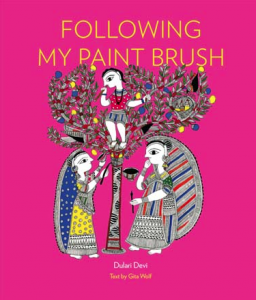
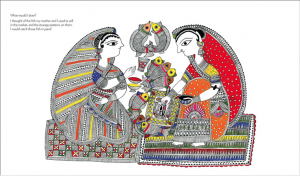
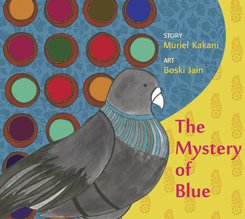
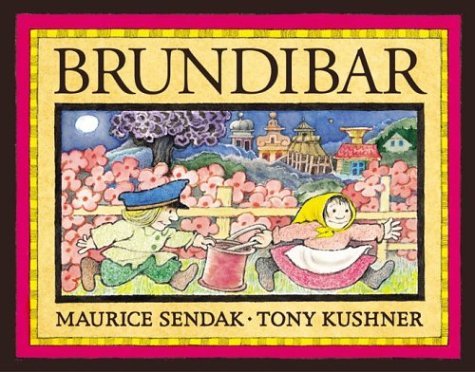
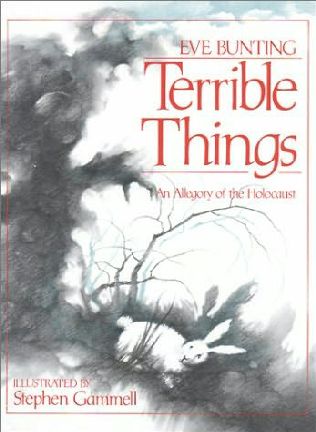
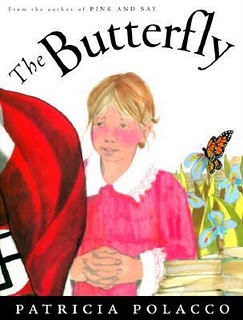

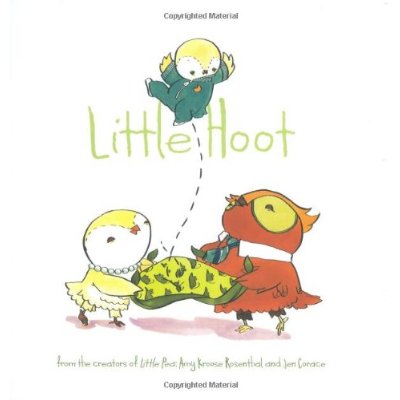
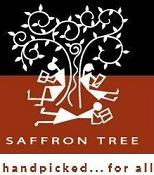
Recent Comments